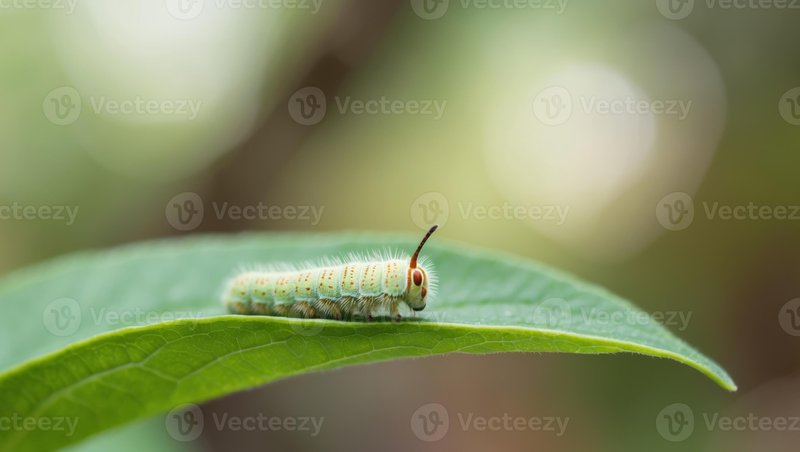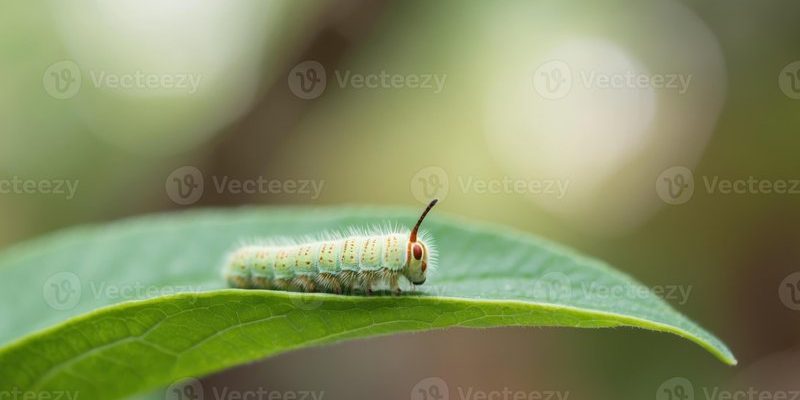
Inchworms, the larvae of geometrid moths, show unique habits that revolve around the time of day. You might be wondering why these changes occur. Well, it all comes down to survival, food availability, and their natural instincts. Let’s dive into the enchanting world of inchworms and explore how their behavior changes from day to night.
Understanding Inchworms: A Quick Overview
Inchworms are not just your garden-variety caterpillars. These little guys take on a very special form in the early stages of their life. They are known for their signature ‘inching’ movement, which they make by contracting and expanding their bodies. Imagine a tiny accordion—this is how they navigate their environment. As they transition from one stage to another, inchworms become vital players in the ecosystem.
You might be surprised to learn that there are around 35,000 species of geometrid moths, with many of them exhibiting inchworm behavior. These larvae typically feed on a variety of plant leaves and foliage. So, where do inchworms thrive? You’ll find them in forests, gardens, and meadows, munching away on the leaves of trees and shrubs.
The Daytime Routine of Inchworms
During the day, inchworms are often less active. Picture this: while the sun is shining bright, these creatures prefer to blend in with their surroundings. They achieve this through camouflage, staying motionless on branches or leaves to avoid predators. This stealth mode is crucial because their biggest threats, like birds and other insects, are out hunting during daylight.
In addition, being out in the open can lead to dehydration for inchworms. That’s why you will most likely see them staying put, waiting for the temperature to drop. Think of it as their own version of hitting the snooze button on a bright morning. They’ll remain tucked away until the evening when it’s safer and cooler.
The Nighttime Adventures of Inchworms
As the sun sets and darkness blankets the landscape, inchworms come alive. Nighttime is when these small creatures truly shine—or rather, when they become more active! With fewer predators lurking around, they venture out to feast on leaves.
But you might be curious: what exactly do they do at night? Well, it’s simple. They munch away on foliage, taking advantage of the cooler temperatures and increased moisture in the air. This is a critical time for them to gather energy for their growth and development. Imagine having a big buffet waiting for you under the stars—this is how inchworms experience the nighttime world.
Why Do Inchworms Act Differently at Day and Night?
Honestly, the change in behavior between day and night comes down to a few key factors: predator avoidance, feeding habits, and temperature regulation. These caterpillars are naturally equipped to sense their surroundings, helping them determine the safest times to come out and find food.
Predators are a significant threat during the day, so staying hidden helps them survive. At night, the risks lessen, allowing them to forage without constant fear. Furthermore, when temperatures drop at night, inchworms can conserve moisture and avoid the scorching heat, thus making nighttime their optimal feeding period.
Feeding Habits: What Do Inchworms Eat?
So, what’s on the menu for inchworms? Their diet primarily consists of leaves from various plants and trees. They are quite particular about their choices! Inchworms tend to savor softer leaves, as these are easier to munch on. They might feast on:
- Oak leaves
- Apple leaves
- Maple leaves
- Pine needles
During the night, they are on the hunt for fresh foliage, nibbling away to gather energy for their growth. This feeding behavior is not just about satisfying their hunger; it’s also crucial for their transformation into moths later in life.
Inchworms and Their Role in the Ecosystem
Every species has an important role, and inchworms are no exception! These little caterpillars contribute to the ecosystem in several ways. By feeding on foliage, they help maintain plant health and promote new growth. This is vital for the trees and plants they inhabit.
Additionally, inchworms serve as a food source for various predators, including birds and small mammals. So, while they may seem insignificant at first glance, they play a crucial role in the food chain. It’s like a delicate dance in nature, where every step counts!
Understanding Inchworms: A Deeper Dive
To truly appreciate these fascinating creatures, it’s essential to understand their lifecycle. Inchworms go through several stages, starting from eggs laid by adult moths. After hatching, they enter the larval stage—this is where their inching behavior kicks in. As they grow, they will molt several times before finally transforming into a pupa. After some time, they emerge as adult moths, continuing the cycle.
Now you might be wondering why inchworms are so important to study. Understanding their behavior, especially between day and night, can provide insights into larger ecological interactions. By keeping track of their habits, scientists can monitor the health of the environment.
Connecting with Inchworms: A Final Thought
Inchworms might be small, but their unique behaviors and habits tell us a lot about survival in the wild. By understanding the differences between their daytime and nighttime activities, you can appreciate how they navigate their world, evade predators, and thrive in their habitats. So, next time you spot one inching along, take a moment to think about its wild journey and the complex life it leads.
The balance of nature is a remarkable thing, and inchworms remind us of that delicate dance. Remember, every little creature has its part to play, just like you and me!

